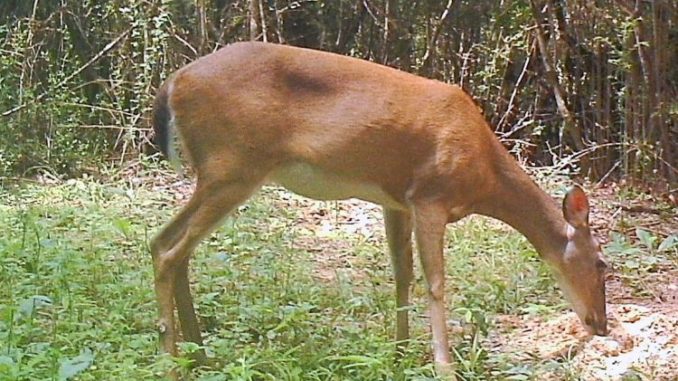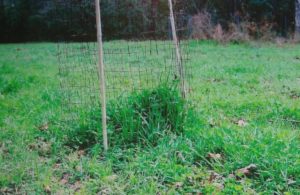
Likely not a new state record typical buck, Moreland says
Except for the issue with chronic wasting disease in Northeast Louisiana, the 2017 season was so-so. Hopefully 2018 will be a little more exciting. But what exactly will does this new season have in store for hunters in the Bayou State?
A new state typical record?
Records are made to be broken, but our Louisiana state record buck in the typical category remains at 184 6/8 B&C, which is the Broadway Buck killed in Madison Parish back in 1943.
When I retired from the Louisiana Department of Wildlife and Fisheries in 2007, I originally predicted the record would be broken in the next 10 years. Some eyebrows were raised when I made the statement in this column last year that the record may never be broken due to declines in both the state habitat and hunter effort. In fact, my comments about the declining quality of our deer habitat landed me on a PBS program.
While our state kills a few B&C bucks every year, most are in the non-typical category, and very few typical bucks have challenged the score for the state record typical buck. Seems like as our bucks grow older there is the tendency for racks to produce non-typical points, which deduct from the typical score. For this reason, hunters like a gross score without any deductions being taken for lack of symmetry. Some contests score deer in this manner, and there is always excitement when a potential new state typical buck is announced in the early weeks of the season. I suspect this will happen again this year, but the true tale of the tape will verify any potential record once the 60-day drying period is over.
So, in an effort to challenge you hunters to prove me wrong, I will predict that this record will not be broken again this season. There is just too much that must happen for a new record; the stars and moon must be in correct alignment, the habitat must be so productive that there is adequate nutrition for maximum antler growth and a hunter must be in the right place at the right time. A new state record buck might be out there on the landscape, but it will probably die of old age before being harvested.
More issues with CWD

If you’re not aware of it, Louisiana is surrounded on all sides by states that have areas where CWD has been detected. The finding of a sick buck in Mississippi early this year resulted in the collecting of 300 deer in Madison, East Carroll and Tensas parishes following the 2017 season. All of them tested negative for the disease, including the 400 deer tested in Mississippi near the area where the sick buck was found. Louisiana has tested more than 8,500 deer since 2002, and none have been positive for CWD, which is good news for the state’s hunters. Louisiana will continue testing during the 2018 season.
There is no treatment for the disease, and since CWD has not been detected in the state, the approach that LDWF has taken to address the issue is to prevent the disease from being introduced. That’s why the emphasis is on prohibiting the importation of live deer into the state, along with regulations and restrictions on the importation of meat, antlers, skulls and heads that are harvested in other states. These Transport and Possession Regulations were set in place in March of 2017, and hunters must strictly adhere to them.
These regulations also require that hunters adhere to all tagging regulations, and that leg bones and other by-products be disposed of in a proper manner.
LDWF is recommending that hunters dispose of deer carcasses properly here, with the preferred method being burying the carcasses on the land where they were harvested. During the CWD collection, LDWF used a track-hoe and buried the deer carcasses and sleds used to carry the dead animals out of the woods 6 feet deep. Now most hunters do not have this luxury, and I am way too old to be trying to dig a hole with a shovel to bury deer parts, so just use common sense. Do not dump in ponds, rivers or streams, and do not carry the carcass to other properties to dispose of it. One approved method is to place the bones and parts in a heavy garbage bag and carry it to a landfill. But this too has limitations for many, since there is no landfill where I live and trash pickup is on Fridays — which would require leaving carcass remains in a bag for a week before it is picked up, which is probably not a good idea.
No doubt that the importation of diseased animals and/or carcasses is probably the avenue that the disease would enter our state since it has not been found at all. An article in the Quality Whitetail magazine got a lot of attention when the author showed that hunters from 49 states killed deer from four counties in Wisconsin that have an issue with CWD. The article showed that nine or so hunters from Louisina killed deer in those counties during the 2016-17 season. Now guess what? The meat and carcass restrictions were not in place at that time, nor were they in place prior to that season. It is possible that since CWD has been in elk and deer herds out west since the 60s, the disease may have already entered the state but has just not reared its ugly head.
Hunters need to follow these transportation and possession regulations, as well as report any sick deer encountered during the hunting season.
More deer hunting restrictions regarding CWD
Should CWD be encountered in the state, there is no doubt LDWF will establish feeding and baiting regulations. The department has already issued warnings to hunters about using deer urines and scents that may be contaminated with the disease. The CWD issue is hitting the deer hunting community hard, but it is something that needs to be addressed. It is possible that hunters could see voluntary testing of deer for CWD, and if it is discovered there would no doubt be mandatory testing in the area where the disease is found. The worst that could happen is for researchers to find a connection between the disease and humans; to date there is no evidence that humans can get the disease from eating infected animals, but should this happen, it would probably spell the end of deer hunting as we know it.
A productive and successful 2018 season
While the CWD issue is something to be alarmed about, the fact that the disease has not been found in the state is good news. From what I have seen driving around the state, the 2018 fawn crop is good. And despite dry conditions, there seems to be a decent acorn crop. I have seen some nice photos of adult bucks that hunters have gotten from their trail cameras, so the stage is set for a good deer season if Mother Nature will provide the right weather that will get the deer moving. Check out the rut calendar in this issue and plan your hunts. Be sure to read the season dates, especially on the wildlife management areas that are different from the private lands. I hope you have a safe and successful season.


